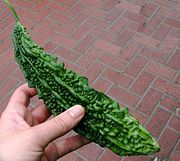Refugee Agricultural Program prepares for growing season
Posted by Lauren Bailey to Agricultural Programs, UncategorizedOn a recent winter Monday in the meeting room of a local church, the farmers in the Refugee Agricultural Program of Middle Tennessee stood under fluorescent light rather than rays of sunshine. But with their training task of the day choosing seeds for planting, the room buzzed with the energy of hope and promise for a new season.
In the cooler months when the gardens offer more brown patches than green, growth continues in the form of preparation, training and relationship building. But beyond learning ways to market and work together—and hearing how the growing seasons differ in Tennessee than their native countries—the trainings help make deeper connections.
Participants build stronger relationships with one another; they learn with neighbors and members of their community and with other communities through selling their food.
“Sometimes farmers come to us with other issues that they are facing in life, such as the complicated nature of obtaining citizenship,” says Lauren Bailey, the Agricultural Programs Director at Center for Refugees and Immigrants of Tennessee. “In these moments, we’re faced with the opportunity to listen and to find ways to connect and advocate with our farmers. As our relationships grow, our understanding of our farmers’ lives grows.”
In March, the trainings move outside to the one-and-a-half acre Market Garden off Haywood Lane.
Each of the 11 farmers in the Refugee Agricultural Program’s Market Garden will have a plot measuring 12 feet by 120 feet (and 24 feet by 120 feet for second-year farmers).
The communal activity of growing food together hopefully helps participants assimilate to life here more naturally.
“Growing food brings us into contact with the earth we all share, with the traditions of agriculture that have kept our species alive, and spirit of abundance that pervades all well-cared for gardens,” says Christina Bentrup of The Nashville Food Project, CRIT’s partner in the Refugee Agricultural Program. “Participants build stronger relationships with each other, with the physical land, with neighbors and members of their community and with other communities through selling their food.”
Indeed, the farmers will be raising crops for their families and communities. But this year, they also will sell to restaurants, and they will offer their produce for purchase at a local farmers’ market. From this foundation of growing with the seasons, farmers can build upon their lives here to thrive even more independently.
“In five to ten years, our hope is that Nashville will be bustling with more community gardens made up of many different nationalities,” Lauren says. “We recognize the need for adapted resources to meet community members where they are and the need for land access. So really, our aim is to provide this for a small number of interested community members in hopes to strengthen this access for future community members.”

